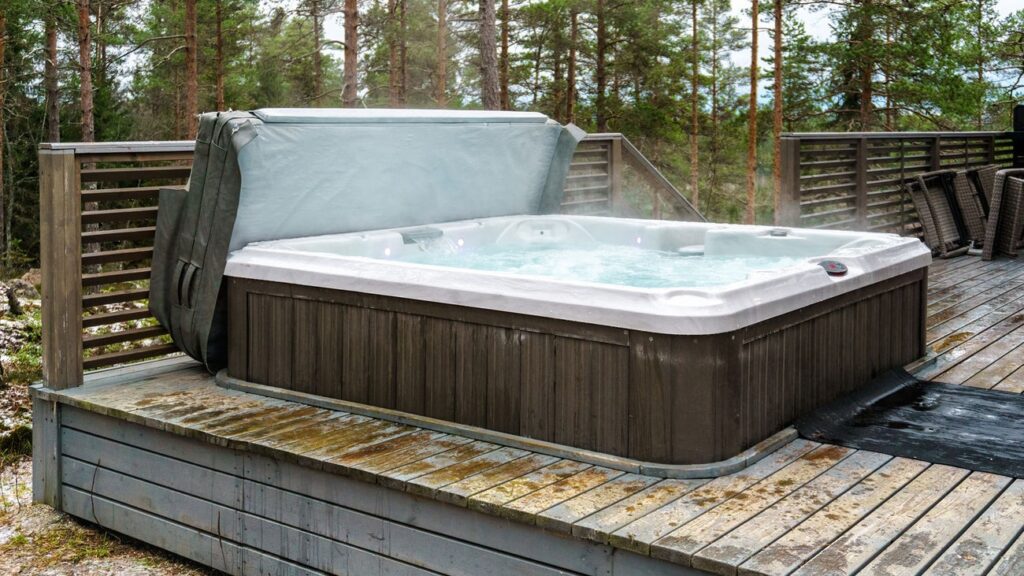Introduction to Spa Covers
When investing in a spa, one of the most important components often overlooked is the spa cover. A spa cover is essential for maintaining the temperature of the water, improving energy efficiency, and ensuring the longevity of your spa. It serves as a barrier against environmental elements, dirt, and debris, providing not only protection but also enhancing your overall spa experience. Choosing the right spa cover can significantly impact the performance and upkeep of your spa, making it crucial to understand the various aspects of spa covers before making a decision.
The Importance of Spa Covers
Spa covers play a critical role in maintaining the efficiency and effectiveness of your spa. They help to retain heat, which can significantly reduce energy costs by minimizing heat loss. This is particularly important for those who use their spas frequently, as the cost of heating water can add up quickly. Additionally, a well-fitted cover prevents debris from entering the spa, reducing the need for frequent cleaning and maintenance. Without a proper cover, leaves, dirt, and other environmental contaminants can quickly accumulate, leading to potential water quality issues and increased maintenance efforts.
Types of Spa Covers
When selecting a spa cover, it’s important to understand the different types available. Common options include foam-filled covers, which are known for their excellent insulation properties, and vinyl covers, which are durable and resistant to wear and tear. Foam-filled covers come in varying densities, with higher density foam offering better insulation and heat retention. Vinyl covers are often easier to clean and maintain but may not provide the same level of thermal efficiency. Another option is the hard cover, which offers a more rigid structure and enhanced security but can be heavier and more challenging to handle. Each type of cover has its advantages and considerations, so understanding your specific needs will help you make an informed choice.
Materials and Durability
The material of a spa cover is a crucial factor in determining its durability and effectiveness. Most spa covers are made from a combination of foam core and a protective outer layer. The foam core is typically made from closed-cell foam, which is resistant to water absorption and provides excellent insulation. The outer layer is usually composed of durable vinyl or synthetic materials that protect the foam from the elements. High-quality covers often feature reinforced seams and UV-resistant treatments to enhance their longevity. When selecting a cover, consider the climate in your area and choose materials that can withstand local weather conditions to ensure long-term performance.
Size and Fit
A spa cover must be appropriately sized and fitted to ensure maximum efficiency and protection. An ill-fitting cover can lead to heat loss, increased energy consumption, and debris entering the spa. To determine the correct size, measure the dimensions of your spa carefully, including length, width, and height. Additionally, consider any features such as steps or additional equipment that might affect the fit. Many manufacturers offer custom options to ensure a perfect fit for your specific spa model. A cover that fits well will provide better insulation, easier handling, and improved overall performance.
Insulation and Energy Efficiency
One of the primary functions of a spa cover is to provide insulation and enhance energy efficiency. A well-insulated cover can significantly reduce heat loss, leading to lower energy bills and more consistent water temperatures. When evaluating insulation, look for covers with a high R-value, which indicates better insulating properties. The R-value measures the cover’s ability to resist heat flow, with higher values representing better insulation. Proper insulation not only helps maintain the desired water temperature but also contributes to the overall comfort of your spa experience.
Maintenance and Care
Maintaining your spa cover is essential for ensuring its longevity and continued performance. Regular care involves cleaning the cover to remove debris and stains, inspecting it for signs of wear or damage, and addressing any issues promptly. Most spa covers can be cleaned with mild soap and water, but avoid using harsh chemicals that may damage the material. Additionally, periodically check the foam core for water absorption, as a saturated cover can lose its insulating properties. Proper care and maintenance will help extend the life of your cover and keep your spa in optimal condition.
Choosing the Right Manufacturer
Selecting a reputable manufacturer is crucial when purchasing a spa cover. A well-known manufacturer is more likely to offer high-quality products, reliable warranties, and excellent customer support. Research different brands, read customer reviews, and consider recommendations from other spa owners to find a trustworthy manufacturer. A reputable company will provide detailed information about their products, including material specifications, insulation values, and warranty terms. Investing in a cover from a reliable source will ensure that you receive a product that meets your expectations and provides long-lasting performance.
Cost Considerations
The cost of a spa cover can vary widely depending on factors such as size, material, and features. While it may be tempting to opt for a less expensive cover, consider the long-term value and potential savings in energy costs and maintenance. High-quality covers often come with higher upfront costs but can save you money over time through improved insulation and durability. Additionally, factor in the cost of installation, if applicable, and any additional accessories that may be required. Investing in a high-quality cover can provide greater benefits and overall satisfaction in the long run.
Conclusion
In summary, choosing the right spa cover is essential for maximizing the performance, efficiency, and longevity of your spa. By understanding the various types of covers, materials, and features available, you can make an informed decision that meets your specific needs and preferences. Consider factors such as insulation, size, and manufacturer reputation to ensure you select a cover that provides the best value and protection for your investment. With the right spa cover, you can enjoy a more comfortable and enjoyable spa experience while minimizing maintenance efforts and energy costs.


